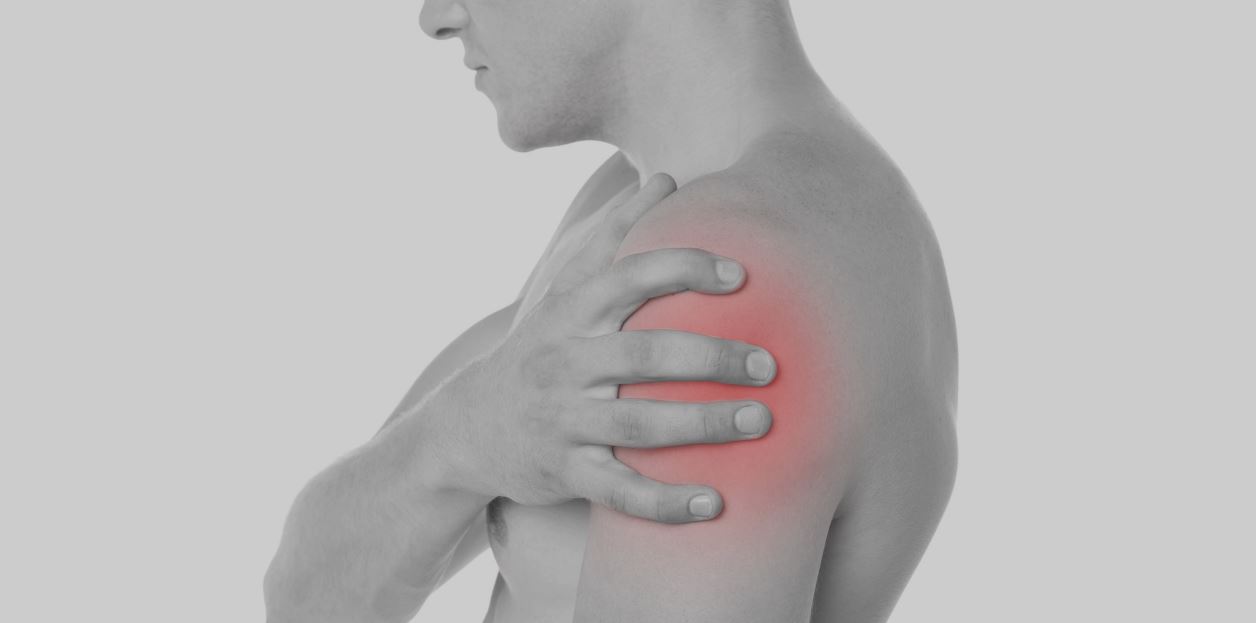In a recent article, we talked about the various shoulder conditions and injuries that can impact a person in their 20s and 30s. In this article, we are moving forward and taking a look at shoulder issues that crop up in your 40s and 50s, and how to remedy these issues.

Shoulder Pain in Your 40s & 50s
For the majority of the population, the process of shoulder degradation continues as a sedentary week is followed by a weekend of intense physical activity (i.e. multi-sets of tennis, chopping wood, yard work, etc.). With the return to work on Monday, shoulder soreness and pain appears.
Soon, we begin to appreciate these ramifications, noting a loss in overhead shoulder mobility. For the golfer, it’s the distance of one’s drive and thus the origins of the Big Bertha. In addition, low grade pain lingers. This unfortunately sends another message to the brain that change needs to occur. With pain emanating from a joint, one loses the ability to utilize muscular strength at its full capacity. This is a protective mechanism; the brain doesn’t want you to further injure a compromised joint by applying excessive loads across tissue surfaces that cannot handle the compressive or shear forces.
Shoulder Tendonitis, Bursitis & Rotator Cuff Issues
At this age there is early permanent change about bony and soft tissue structures as reveled via x-ray or MRI. The common diagnosis will include tendonitis, bursitis and rotator cuff fraying. Strength is progressively lost, creating further deficiency with attempts at maintaining a higher level of function as one inherently desires. If this pattern of microtrauma is interspersed with periodic episodes of macro trauma, i.e. direct impact on the joint (falling on the ice), the process of wear and tear is expedited. The joint becomes progressively inflamed and thus less resilient with activity further enhancing the process of degradation. It is at this time that one begins to appreciate recurrent bouts of tendinitis and bursitis (both pain generators) as well as initial experiences of generalized weakness with the arm placed overhead or across the torso.
How to Remedy Shoulder Issues in Your 40s & 50s
- For many the route to resolution is going back to the gym and doing the same things you did when you were 25 (i.e. bench pressing and triceps dips). Not only are these exercises not sport specific, they once again take the shoulder joint into extremes where it cannot feasible go, thus creating more trauma and enhancing the slow downward spiral that currently exists. Instead a focus of functional mobility and strength using lighter loads and higher reps safely done within the realm of safe and pain free motion is the focus, again as sport specific as possible.
- It may be time to consult with an experienced personal trainer or physical therapist to ensure success in this realm. In addition to this, initiating a Pilates or yoga program allowing for functional mobility restoration head to toe while simultaneously strengthening at these newly regained motion patterns is recommended.
- Proper torso and foot placement is crucial component to effectively hitting a tennis ball with minimal adverse effects on the shoulder. With improved bodily strength and mobility, improve upon footwork and get in the habit of hustling to the ball to properly set yourself up for the shot.
Always available for your questions: contact Twin Cities shoulder specialist Terry Buisman at 952-922-0330.
- Staying Fit While Aging - July 3, 2023
- How Much Exercise do You Need to Stay Healthy? - September 21, 2022
- Even a Small Amount of Exercise can Have Huge Benefits for Our Bodies - March 16, 2022
